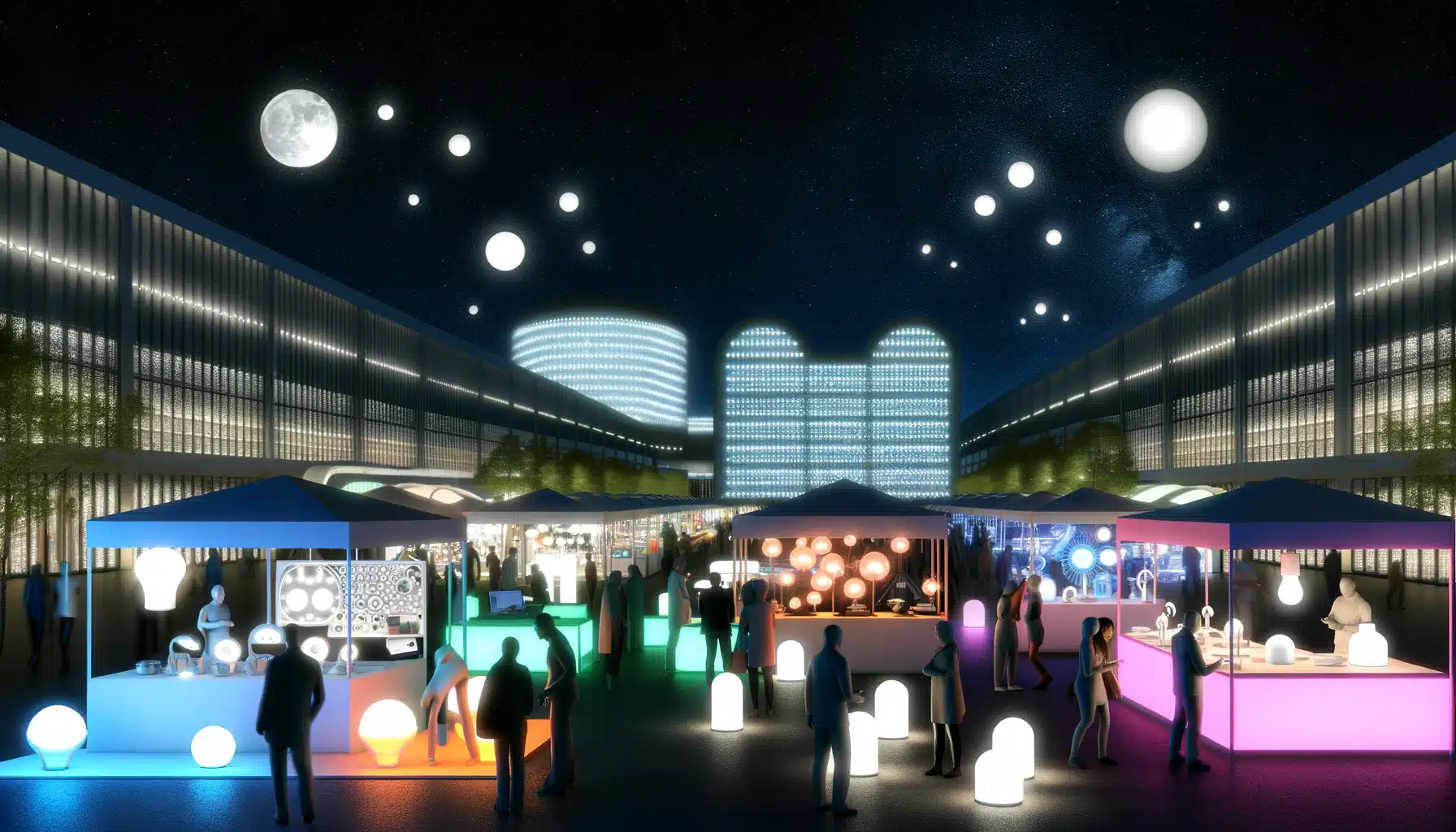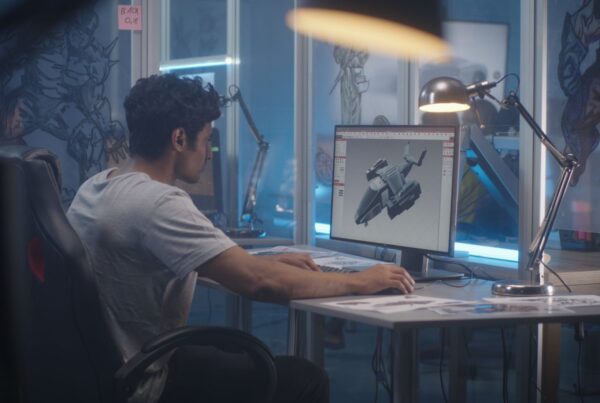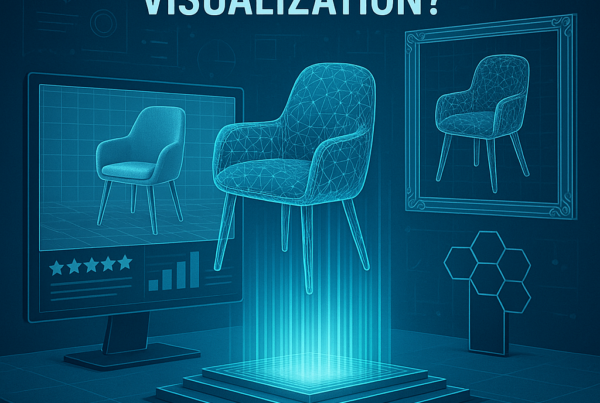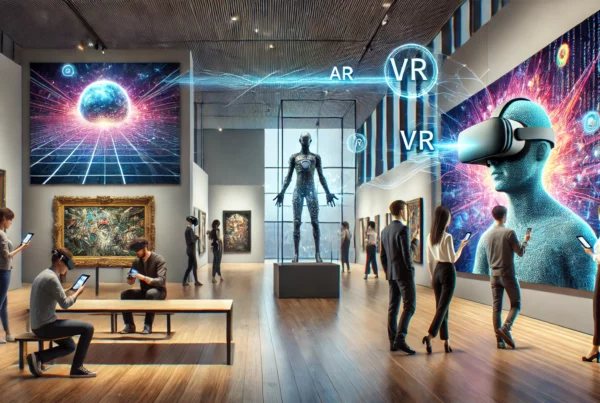In the lighting industry, showing off products in a way that grabs attention and wins over customers online is key. Visual commerce has become increasingly important, bringing creative ways to make shopping more exciting and helping guide customer choices. In this article we will look into how visual commerce is making a big difference in the lighting industry. It’s about changing how customers see and choose lighting products, and how this can really boost business in a sector that’s always changing.
In this article, we’ll dive into:
- How creating lifelike images of products can make a big difference in online shopping choices and make brands look better.
- The benefits of using 3D configurators for lighting products that people can customize, making customers happier and cutting down on returns.
- The role of augmented reality in helping customers see how lighting would look in their homes, boosting their confidence to buy online and making the shopping experience less uncertain.
Increasing Lighting Sales with Visualization Tools
In the competitive world of the lighting industry, sophisticated visualization tools are essential for driving sales and elevating customer satisfaction. Advanced visualization technologies enable businesses to provide a deeply immersive and personalized shopping experience.
Photorealistic product images are the foundation of this approach, capturing the imagination of customers and influencing their decisions to purchase. These images allow customers to see how different lighting products will look and perform in their own environments, building trust and confidence in their choices. Furthermore, 3D modeling technologies give customers the power to customize lighting solutions to fit their exact needs, from choosing sizes and styles to exploring various finishes and features.
This customization level not only boosts customer engagement but also lowers the chance of returns, as shoppers have a clear picture of what they’re buying before they complete the purchase. Augmented reality (AR) enhances this experience, enabling customers to virtually place lighting products in their intended settings for a realistic preview of how the fixtures will look in their homes or commercial spaces.
Implementing these visualization tools successfully allows businesses to upgrade their online shopping experience, increase sales, and position themselves as frontrunners in the dynamic lighting industry.
Creating Photorealistic Product Images
Within the vibrant world of visual commerce, the power of photorealistic product images shines particularly bright in the lighting industry. These images open the door to online sales, seizing customer interest and steering their purchasing journey. Businesses harness sophisticated rendering techniques and high-end photography gear to forge captivating visuals that faithfully reflect their lighting products’ complexity.
These visuals not only highlight the design and artisanship of the fixtures but also their beauty and practicality. By paying close attention to aspects like texture, true-to-life colors, and the interplay of light and shadow, companies can stir an emotional pull in customers, igniting their imagination and enhancing their desire for the products. Additionally, photorealistic images maintain consistency across all marketing platforms, solidifying brand recognition and building trust among prospective customers.
Features like zooming and rotating allow customers to examine every aspect of the lighting products meticulously, enriching their shopping experience and bolstering confidence in their buying decisions. By prioritizing the creation of photorealistic product images, businesses not only boost their online visibility but also heighten customer interaction and stimulate sales, distinguishing themselves in the fiercely competitive lighting industry.
Leveraging a 3D Product Configurator for Customized Lighting Products
In today’s competitive landscape, the ability to offer customizable solutions is paramount for catering to the varied tastes and needs of customers, a principle that holds true in the lighting industry. A 3D product configurator emerges as a vital instrument in this context, granting customers the freedom to tailor lighting solutions to their precise requirements.
This tool initiates customers into a personalized design journey where they can choose from an extensive range of options such as size, style, and color. This level of interaction not only allows customers to bring their perfect lighting vision to life in real-time but also deepens their connection with the product, enhancing their satisfaction with their bespoke creations.
Incorporating a 3D product configurator into ecommerce platforms simplifies the purchasing pathway, enabling immediate visualization of customizations. This streamlined process not only lifts customer satisfaction but also minimizes returns by providing a transparent preview of the final product.
Moreover, the insights gained from customer usage of the configurator are invaluable for businesses. Analyzing these interactions offers a window into consumer trends and preferences, enabling companies to fine-tune their offerings and adjust inventory strategies to align more closely with customer desires.
In essence, the strategic use of a 3D product configurator for customizable lighting enriches the customer’s shopping experience and furnishes businesses with critical data insights, fostering growth and success in the dynamic lighting sector.
Implementing Augmented Reality for Lighting Solutions
Augmented Reality (AR) stands at the forefront of a transformative wave, altering how customers discover and interact with lighting products. This innovative technology weaves digital information into the fabric of the real world, offering customers a window to envisage lighting solutions in their personal environments prior to purchase.
AR’s forte lies in its unparalleled capacity to bolster consumer confidence and sharpen their decision-making prowess. Offering a lifelike glimpse of lighting products within their intended settings, AR dispels doubts and guides consumers toward choices that resonate with both their aesthetic sensibilities and functional requirements.
Furthermore, AR crafts a shopping journey of immersion, sparking a profound sense of connection and proprietorship among consumers. The technology’s allowance for customers to virtually position and adjust lighting fixtures in their spaces nurtures a stronger bond with the products, thus enhancing the probability of a sale.
For businesses, the adoption of AR technology carries a spectrum of strategic benefits. It notably curtails the likelihood of returns by granting customers a lucid comprehension of the product’s real-world application and aesthetics. Beyond this, experiences augmented by AR can carve a distinctive identity for brands within a saturated market, heralding them as pioneers attuned to consumer needs.
Committing to AR in lighting solutions enables businesses to refine the shopping experience profoundly, amplify consumer contentment, and catalyze sales, securing a vanguard position in the swiftly evolving lighting sector.
Implications and Benefits of Visual Commerce in the Lighting Industry
Visual commerce is reshaping the landscape of the lighting industry, heralding a new era where the line between digital and physical shopping realms becomes beautifully blurred. This evolution brings forth profound benefits and transformative implications for both businesses and consumers alike. Central to this revolution is the unparalleled capacity to merge online convenience with the sensory richness of offline exploration. Through the lens of advanced visualization tools like lifelike product images, dynamic 3D configurators, and the immersive world of augmented reality, customers can delve into the nuances of lighting products without stepping outside their doors, closely mirroring the experience of physical store browsing.
This innovative approach to commerce significantly enriches the consumer’s decision-making journey. By empowering customers to tailor lighting solutions to their exact liking and envisage these customizations within their own spaces via AR, businesses can dramatically elevate consumer confidence and joy. This, in turn, nurtures higher conversion rates and diminishes the frequency of returns.
For enterprises, visual commerce provides outstanding advantages, from boosting sales and amplifying revenue to carving out a distinctive market identity. By employing these sophisticated visualization tools, companies can present their offerings in a manner that not only captivates but also persuades potential buyers, steering them towards making a purchase. Moreover, visual commerce serves as a tool for businesses seeking to stand out, enabling them to craft a robust and memorable brand presence.
Beyond captivating visuals, visual commerce streamlines and refines the purchasing process, enhancing operational efficiency. Utilizing technologies such as 3D configurators, the pathway from product customization to order fulfillment is both accelerated and simplified, minimizing the expenditure of time and resources. This efficiency not only heightens customer contentment but also sharpens inventory management and production strategies, fostering cost-effectiveness and bolstering profitability.
In essence, the advent of visual commerce in the lighting sector marks a pivotal juncture, offering a vista of opportunities for business growth and innovation. As we embrace these cutting-edge technologies, we pave the way for a shopping experience that transcends traditional confines, delighting customers and propelling businesses towards a luminous future.
Conclusion
In wrapping up, it’s clear that visual commerce, fueled by advanced technologies like photorealistic imagery, 3D product configurators, and augmented reality, has been a game-changer for the lighting industry. These potent tools have reshaped the way customers interact with lighting products, turning the shopping process into an immersive, personalized journey that enriches the entire experience.
By tapping into the rich possibilities offered by visual commerce, lighting businesses can present their products in a compelling light, enabling customers to make purchases with confidence. Lifelike images enhance the allure and perceived quality of lighting fixtures, 3D configurators allow for unparalleled customization to align with consumer preferences, and augmented reality offers a glimpse into how these choices will look in actual living spaces, bolstering the buyer’s confidence.
The strategic deployment of these visual tools yields a host of advantages for businesses: fewer returns, more efficient inventory management, and a stronger brand presence that stands out in a crowded marketplace. By adopting visual commerce strategies, businesses not only stay competitive but also align closely with the shifting expectations of today’s digital-savvy consumers, setting the stage for sustained achievement in the ever-evolving world of lighting.
Visual commerce stands not as a fleeting trend but as a pivotal shift, heralding a new era for the lighting industry. As technologies advance, businesses at the forefront of this visual revolution are poised to excel, offering unparalleled experiences to their customers and redefining the essence of shopping in the digital era.





